Repair-Resistant DNA Lesions
- PMID: 28750166
- PMCID: PMC5569670
- DOI: 10.1021/acs.chemrestox.7b00128
Repair-Resistant DNA Lesions
Abstract
The eukaryotic global genomic nucleotide excision repair (GG-NER) pathway is the major mechanism that removes most bulky and some nonbulky lesions from cellular DNA. There is growing evidence that certain DNA lesions are repaired slowly or are entirely resistant to repair in cells, tissues, and in cell extract model assay systems. It is well established that the eukaryotic DNA lesion-sensing proteins do not detect the damaged nucleotide, but recognize the distortions/destabilizations in the native DNA structure caused by the damaged nucleotides. In this article, the nature of the structural features of certain bulky DNA lesions that render them resistant to NER, or cause them to be repaired slowly, is compared to that of those that are good-to-excellent NER substrates. Understanding the structural features that distinguish NER-resistant DNA lesions from good NER substrates may be useful for interpreting the biological significance of biomarkers of exposure of human populations to genotoxic environmental chemicals. NER-resistant lesions can survive to replication and cause mutations that can initiate cancer and other diseases. Furthermore, NER diminishes the efficacy of certain chemotherapeutic drugs, and the design of more potent pharmaceuticals that resist repair can be advanced through a better understanding of the structural properties of DNA lesions that engender repair-resistance.
Conflict of interest statement
The authors declare no competing financial interest.
Figures

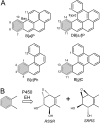
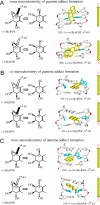
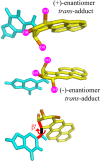

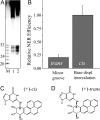



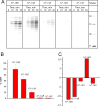

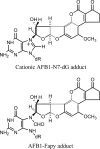
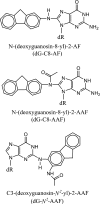
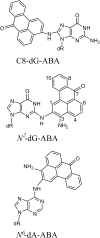


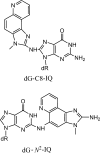
Similar articles
-
Nucleotide excision repair efficiencies of bulky carcinogen-DNA adducts are governed by a balance between stabilizing and destabilizing interactions.Biochemistry. 2012 Feb 21;51(7):1486-99. doi: 10.1021/bi201794x. Epub 2012 Feb 9. Biochemistry. 2012. PMID: 22242833 Free PMC article.
-
The DNA damage-sensing NER repair factor XPC-RAD23B does not recognize bulky DNA lesions with a missing nucleotide opposite the lesion.DNA Repair (Amst). 2020 Dec;96:102985. doi: 10.1016/j.dnarep.2020.102985. Epub 2020 Oct 1. DNA Repair (Amst). 2020. PMID: 33035795 Free PMC article.
-
DNA adducts from a tumorigenic metabolite of benzo[a]pyrene block human RNA polymerase II elongation in a sequence- and stereochemistry-dependent manner.J Mol Biol. 2002 Aug 2;321(1):29-47. doi: 10.1016/s0022-2836(02)00593-4. J Mol Biol. 2002. PMID: 12139931
-
Thermodynamic and structural factors in the removal of bulky DNA adducts by the nucleotide excision repair machinery.Biopolymers. 2002 Nov 5;65(3):202-10. doi: 10.1002/bip.10239. Biopolymers. 2002. PMID: 12228925 Review.
-
Nucleotide excision repair in higher eukaryotes: mechanism of primary damage recognition in global genome repair.Subcell Biochem. 2010;50:251-77. doi: 10.1007/978-90-481-3471-7_13. Subcell Biochem. 2010. PMID: 20012586 Review.
Cited by
-
Synergistic effects of H3 and H4 nucleosome tails on structure and dynamics of a lesion-containing DNA: Binding of a displaced lesion partner base to the H3 tail for GG-NER recognition.DNA Repair (Amst). 2018 May;65:73-78. doi: 10.1016/j.dnarep.2018.02.009. Epub 2018 Mar 8. DNA Repair (Amst). 2018. PMID: 29631253 Free PMC article.
-
Differing structures and dynamics of two photolesions portray verification differences by the human XPD helicase.Nucleic Acids Res. 2023 Dec 11;51(22):12261-12274. doi: 10.1093/nar/gkad974. Nucleic Acids Res. 2023. PMID: 37933861 Free PMC article.
-
Applying Tobacco, Environmental, and Dietary-Related Biomarkers to Understand Cancer Etiology and Evaluate Prevention Strategies.Cancer Epidemiol Biomarkers Prev. 2020 Oct;29(10):1904-1919. doi: 10.1158/1055-9965.EPI-19-1356. Epub 2020 Feb 12. Cancer Epidemiol Biomarkers Prev. 2020. PMID: 32051197 Free PMC article.
-
Risk assessment of aflatoxin B1 in herbal medicines and plant food supplements marketed in Malaysia using margin of exposure and RISK21 approaches.Genes Environ. 2023 Nov 23;45(1):31. doi: 10.1186/s41021-023-00286-1. Genes Environ. 2023. PMID: 37993956 Free PMC article.
-
Impact of DNA sequences on DNA 'opening' by the Rad4/XPC nucleotide excision repair complex.DNA Repair (Amst). 2021 Nov;107:103194. doi: 10.1016/j.dnarep.2021.103194. Epub 2021 Jul 29. DNA Repair (Amst). 2021. PMID: 34428697 Free PMC article.
References
Publication types
MeSH terms
Substances
Grants and funding
LinkOut - more resources
Full Text Sources
Other Literature Sources

